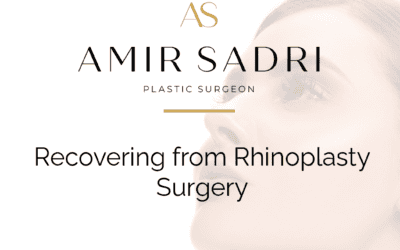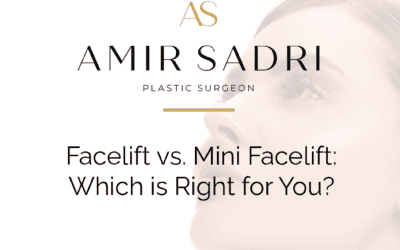From the delicate and complex intricacies of human hearing to the decorative aesthetics of earlobes, our ears play a vital role in both function and form. But what happens when form does not match our desires? In the realm of cosmetic and reconstructive surgery, procedures focusing on the ears offer a spectrum of options, providing people with the ability to correct, enhance, or reclaim a feature that significantly impacts their self-image and confidence.
This detailed guide dives into the nuances of three prominent ear surgeries: ear pinning, ear lobe repair, and ear lobe reduction. We’ll explore each procedure, its potential benefits, challenges, and important considerations for anyone contemplating these surgical paths.
Understanding Ear Pinning (Otoplasty)
What is Otoplasty?
Otoplasty, commonly known as ear pinning, is a surgical procedure designed to alter the shape, size, or position of the ears. The term ‘pinning’ usually refers to the correction of ‘prominent’ or ‘bat ears,’ where the ears stick out from the head at an abnormal angle.
Who is a Candidate for Ear Pinning?
Parents frequently seek otoplasty for their children before the age of six, to prevent potential emotional distress from bullying and teasing. Adults can also undergo the surgery, and there’s no upper age limit for the procedure. Click here to learn more about children’s ear pinning.
The Procedure
As with any surgical procedure, ear pinning begins with an incision, usually made behind the ear. The surgeon then manipulates the ear cartilage to achieve the desired repositioning. Excess cartilage might be removed, and sutures can be used to maintain the new structure.
Recovery and Results
Post-surgery, patients typically wear a headband for several days to weeks to protect the ears. Full recovery can take several months, and the final results may not be visible until then. Otoplasty is a surgery with high patient satisfaction, often providing a significant boost in self-esteem.
Exploring Ear Lobe Repair
Why is Ear Lobe Repair Necessary?
Ear lobe repair addresses earlobe damage from trauma or piercings, which can lead to stretching, tearing, or other deformities. It’s a procedure sought after to repair and restore a natural lobe outline.
Treatment Options
The type and extent of the lobe repair needed will vary depending on the damage. Minor lobe repairs may involve simply stitching the lobe back together. In cases of significant trauma, a more complex procedure, such as a lobe reconstruction, may be necessary, often requiring cartilage grafting to maintain shape and integrity.
The first step is to remove the skin lining the split in the lobe. This exposes the edges of the lobe’s cartilage, which is then trimmed to create a fresh base for the lobe. The edges of the split are sutured together, and the skin is replaced, with sutures or skin glue used to close the incision.
Recovering from Lobe Repair
After the lobe repair, it’s essential to follow aftercare instructions to avoid complications. This typically includes keeping the area clean, avoiding pressure or trauma, and refraining from wearing earrings for a specified time.
The Role of Ear Lobe Reduction
What Does Ear Lobe Reduction Achieve?
Ear lobe reduction is a procedure that decreases the size of the ear lobes. Some people are born with larger ear lobes, while others experience ear lobe enlargement with age or due to wearing heavy earrings.
The Procedure
Ear lobe reduction can be performed under local anesthetic. An incision is made on the lower aspect of the lobe, and a small segment of tissue is removed. The lobe is then reshaped, and the incisions are closed.
Recovery and Post-Operative Care
Recovery is usually quick with minimal downtime. Patients will need to keep the ears clean and follow the surgeon’s guidelines for aftercare. Sutures are usually removed after about a week.
Comparing the Procedures
While these procedures may be distinct, they also share some elements, such as the need for careful planning and sterile surgical environments. They all highlight one overarching principle: the surgery must blend technical precision with an understanding of harmony and balance in the face and its features.
Addressing Risks and Considerations
Understanding the Risks
As with any surgery, there are inherent risks. These might include infection, scarring, and possible issues with anesthesia. Surgeons must thoroughly discuss potential complications with patients.
Selecting a Surgeon
Choosing a skilled and experienced surgeon is paramount. Prospective patients should research their options, read reviews, and even request to see before and after photos of previous ear surgeries performed by the surgeon they are considering.
Cost and Insurance
Ear surgeries are typically elective and are not covered by insurance. The cost can vary significantly based on factors such as the location of the practice, the surgeon’s experience, and the complexity of the procedure.
Conclusion: Empowerment Through Ear Surgeries
Ear surgeries are not solely about appearance; they often have a profound impact on individuals’ self-assurance and quality of life. From the correction of protruding ears to repairing trauma-induced damage or simply altering the size of earlobes for aesthetic harmony, these procedures offer a canvas for personal transformation.
Patients are encouraged to research thoroughly, consult with qualified surgeons, and ask as many questions as necessary before committing to surgery. With the right knowledge and guidance, ear surgery can be a confident step towards personal empowerment, self-expression, and a more positive self-image.
For those considering an ear surgery journey, this guide is the first step to understanding the nuances of these transformative procedures. As each individual’s case is unique, a personalized approach, thoughtful discussion with a surgeon, and a clear vision of personal goals are pivotal in this remarkable journey of self-refinement.




